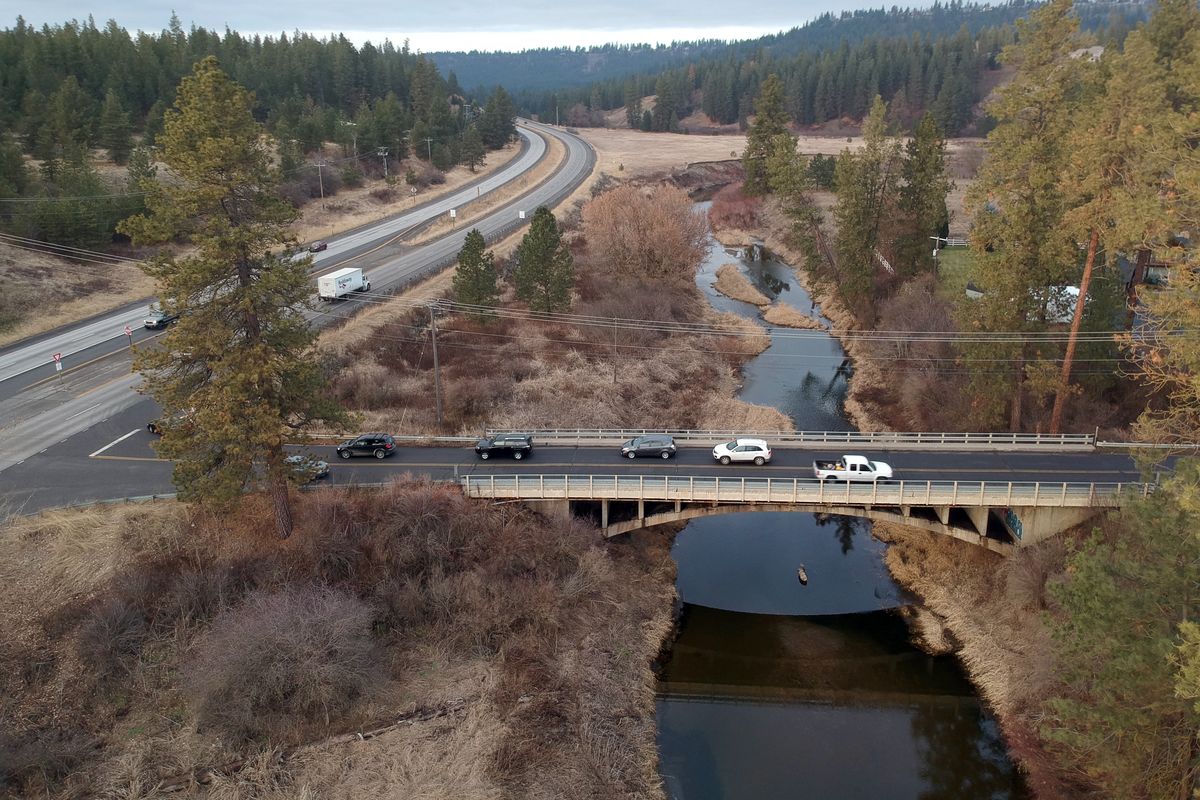This column reflects the opinion of the writer. Learn about the differences between a news story and an opinion column.
Getting There: Hatch Bridge to get new deck and maybe a turn lane, causing long detours

If you want to know how vital the Hatch Bridge is, take a quick look at the detour its impending temporary closure will require.
When the city of Spokane shutters the brief span over Latah Creek in the spring to repair it, drivers will lose a vital connection from Highway 195 to the South Hill and will instead be directed to drive north on High Drive, get on Interstate 90 at Maple Street and head west before circling back down 195 to get where they are going.
The city is also considering a second, southern option that would send drivers down Hangman Valley Road and reconnect to Highway 195 at Smythe Road, though the exact path of that detour hasn’t been determined.
Work to replace the bridge’s deck is expected to begin in April and last through September, according to Marlene Feist, a city spokeswoman.
While that will cause a major monthslong headache for drivers, Feist said the work will pay off in the long run, improving the safety and utility of what is the only eastbound connection to the city street network for a nearly eight-mile stretch between Thorpe Road to the north and Excelsior Road to the south.
The current bridge, Feist said, is subject to shifting when heavy vehicles cross. That deflection, as the phenomenon is technically known, leads the deck to shift and requires frequent short-term closures to make repairs. It also means weight restrictions that prevent fire trucks and other big rigs from using it.
“The new deck will fix these issues so we can remove the load limits and reduce future maintenance which results in planned and unplanned closures of the bridge,” Feist wrote in an email.
But the city is also hoping the bridge work will add another benefit for drivers: a pocket right-turn lane on the west side of the bridge to ease congestion at the Highway 195 intersection.
That would help shorten, if not prevent, the build up of long lines of backed-up vehicles waiting to enter or cross Highway 195. It would also aim to improve visibility for drivers entering the highway.
Approval for the pocket turn from the Washington State Department of Transportation is still pending, Feist said.
WSDOT’s Char Kay said, “This is a small improvement that will help reduce intersection delay, but we are of the opinion that it will not remedy the intersection issues.”
The decisi
on to sink $1.4 million into the project suggests officials don’t plan to move forward with one ambitious plan to remedy those issues: create a full interstate-style interchange.
While that proposal still exists in official long-range planning documents, Ryan Stewart, principal transportation planner for the Spokane Regional Transportation Council, said he and transit-planning colleagues are currently “looking at more practical” possibilities to improve the Highway 195 corridor.
“We’re looking at a couple of different options for modifying that” intersection, Stewart said. “One includes J-turns there, like there are currently at Thorpe Road. Whether that goes forward or not still needs to be vetted, definitely, with the public to see how supportive they are of that type of treatment. … We haven’t quite gotten to that stage yet. We’ve been working closely with WSDOT to determine what can or cannot be done on 195.”
Stewart said he and his colleagues from a number of area jurisdiction and agencies, including the city, county, WSDOT and the Spokane Transit Authority, aim to begin the public engagement phase of the study early next year.
But the bridge project may be a modest beginning to an overhaul of windy, steep, two-lane Hatch Road.
Over the past couple of decades, a number of ambitious proposals for rethinking Hatch have come and gone without action, even as housing and traffic in the southwest corner of the city have boomed.
Back in 2004, SRTC studied the possibility of constructing what it was calling the Hatch Road bypass, which would have made a new link from the bridge to either to Freya Street or the Old Palouse Highway.
Five years later, the city produced a report that analyzed what it called the “deficiencies and safety issues on the Hatch Corridor” and came up with various options for improving the road’s connection to 57th Avenue, adding bike lanes and other wise making the street safer.
Katherine Miller, the city’s director of integrated capital management, said that study “didn’t come to a recommended conclusion” about what to do, though it determined the cost of improving the intersection at 57th and adding bike and pedestrian amenities looked to be just under $10 million.
While nothing concrete has come of the study, Miller said the information it provided could help the city determine whether to pursue further improvements along Hatch in the future, especially once uncertainty about its junction with Highway 195 is resolved.
“We’re watching and observing and have options to consider with the community into the future,” Miller said.
